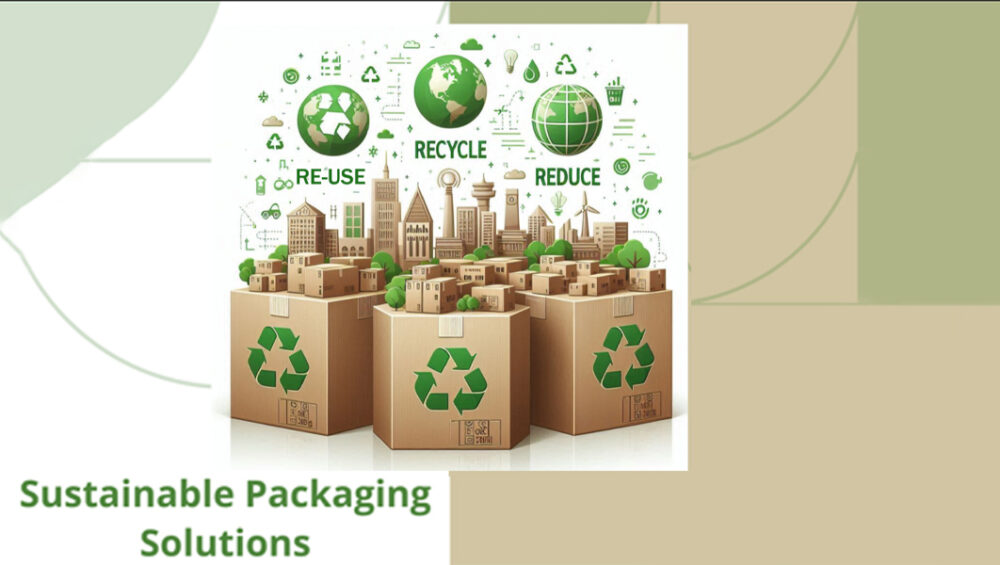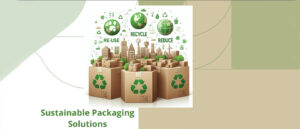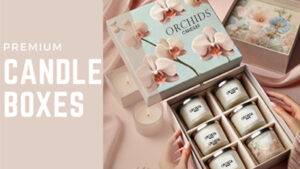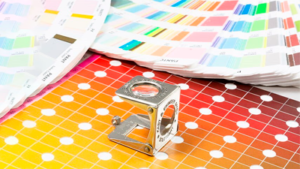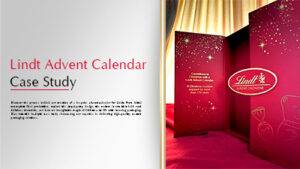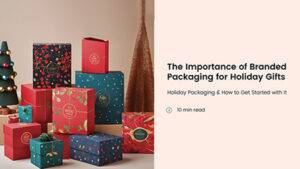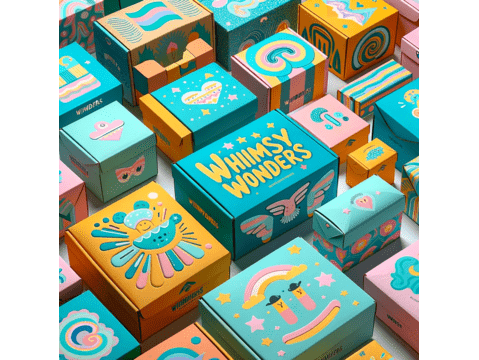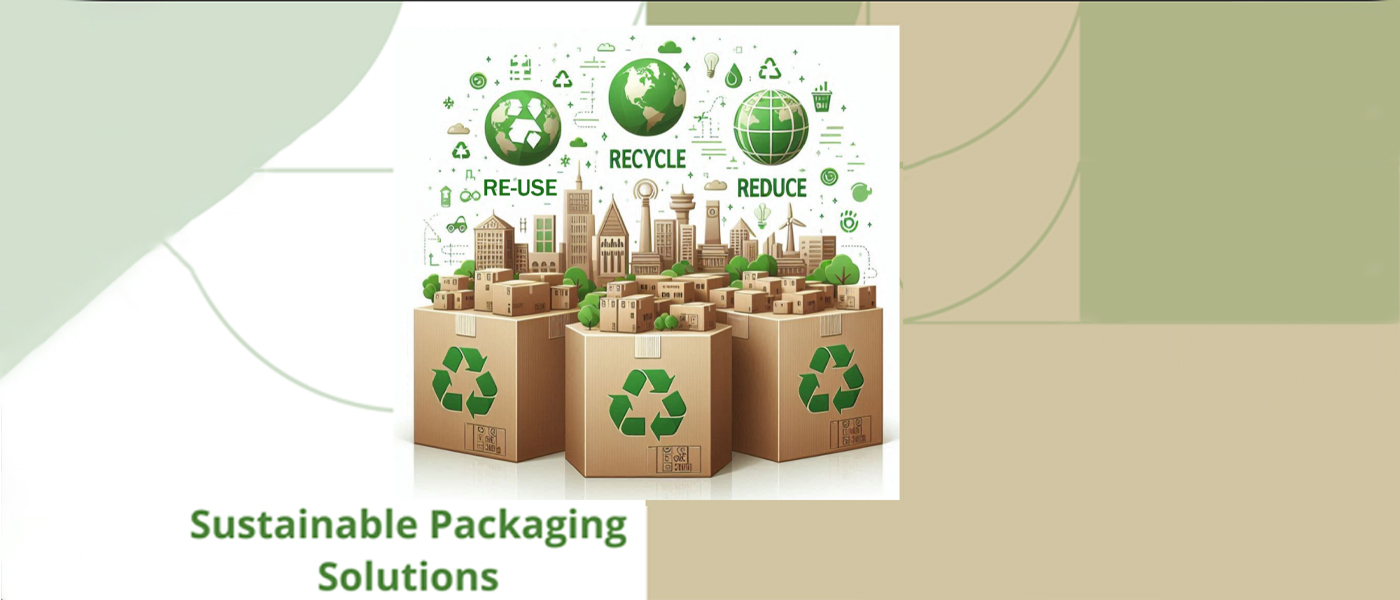
Tips and Tricks for Developing Sustainable Packaging
Consumers today are more aware and connected they ever before. People in general have become more aware of what they eat, what they wear, and what they buy and within that growing awareness, sustainability has emerged not only as a top concern but also a key marketing success factor.
Sustainability is one of the top things that customers expect from brands they buy from and this expectation encompasses every element of the brand and its products including packaging.
So, the packaging today needs to be more than just functional and aesthetic – it has to be sustainable.
But how do you get the right mix between functionality, cost, and sustainability? Sustainability is a complex issue with multi-faceted practicalities and therefore no single article can endeavour to justly explain it.
This article aims to unravel some of the key concepts surrounding sustainable packaging and how organizations can use SMART goals to integrate sustainable packaging into their value chains.
Sustainable Packaging
Let’s start with the most fundamental question. What do we mean when we say “sustainable packaging”?
At its core, sustainable packaging solutions focus on minimizing and if possible, eliminating, any negative externality of their lifecycle on third-party stakeholders. Operationalizing this definition means strategically constructing your product packaging to minimize the use of virgin resources, using as few resources as possible, using renewable or recyclable materials and developing packaging that is easy to upcycle, recycle or decompose.
The need for product packaging is almost as huge as the need for the product itself. In most cases, manufacturers cannot simply do away with the product packaging. The right course of action then is to invest in sustainable packaging.
Why Should Custom Boxes Be Sustainable?
The custom boxes should be sustainable to cater to growing consumer expectations and contribute to a healthier environment. Let’s see some of the benefits related to greener packaging and influencing businesses:
Environmental Protection
The most direct benefit you can get from sustainable custom boxes is less harm to the environment. Sustainable packaging allows for minimal waste and pollution, often because of fewer resources used for manufacturing.
Different companies can reduce their carbon footprint by a higher margin by reducing their dependency on virgin materials and increasing the usage rate of recycled content.
Besides, it tends to be biodegradable or recyclable, therefore, minimizing its presence in landfills and the broader environment.
Improved Brand Image and Consumer Appeal
As consumers are becoming increasingly sensitive towards the environment, they are most likely to continue patronizing brands that show proper concern and care for the environment.
The use of green customized packaging helps you to enhance your brand image and create customer loyalty while at the same time attracting those customers who place a high value on environmental sensitivity. This, in return, results in a high market share along with customer retention.
Compliance with Regulations
Due to increased pollution, the governments of different parts of the world have started to implement strict rules and regulations related to packaging materials. Sustainable custom boxes help you follow such rules and regulations.
It reduces hefty fines and other legal problems for the brands. This will also be beneficial for your company to come out as an industry leader concerning sustainability practices.
Cost Savings in the Long Run
While the initial investments in reusable packaging may be a bit higher, the savings can be considerable over time. Thoughtful material usage and design reduce the prices related to shipment, material costs, and waste management fees.
Moreover, sustainability often implies the optimization of production processes, reducing energy and resource consumption.
Improved Supply Chain Efficiency
Most of the time, sustainable packaging uses lighter materials and optimization in designs to provide better logistics. This reduces transportation costs and enhances supply chain efficiency.
For instance, you can send more products within the same space because of the better design and lighter packaging, which, in return, reduce fuel costs.
Increased Investor Interest
Modern investors prefer those brands that are considerate of sustainable practices. When companies show that they are into sustainability, they become more attractive to investors wanting to fund businesses with long-term viability and ethical practices. This translates to better financial backing and more robust growth opportunities.
Innovation and Market Opportunities
Sustainability can be one of the drivers of innovation in product and packaging design. Innovation provides new opportunities in marketing, such as unique, eco-friendly packaging solutions that meet specific customer needs or create a new market niche.
Improved Community and Stakeholder Relations
Brands invested in sustainable practices are more likely to maintain good brand-buyer and brand-stakeholder relationships. This is because they are perceived to contribute to a healthier environment and to be taking an active role in the promotion of sustainable local economies. Better relationships make operations easier and result in supportive local initiatives.
Simply put, companies can reduce operational costs and get multiple benefits by implementing eco-efficient manufacturing processes along with energy-saving technologies.
Criteria of Sustainable Customized Packaging
The Sustainable Packaging Coalition, a collaborative, non-profit organization focused on making packaging more sustainable listed eight criteria for packaging to be classified as sustainable.
These are listed as under:
Criteria | Sustainable Development | Packaging | Strategic Opportunities |
“Beneficial, safe & healthy for individuals and communities throughout its life cycle” | Improves public health by reducing toxic exposure and pollution | Use non-toxic and biodegradable materials as they will not harm the environment in any way during disposal or recycling | Reinforces the brand’s reputation and enhances consumer trust through a focus on safety and care for the environment |
“Meets performance and cost criteria of the market” | Strikes a balance to make sustainable options both eco-friendly and affordable | The material represents cost-effective, high-performance packaging without giving up on sustainability | Opens new markets by appealing to the eco-conscious consumer and controls costs of production |
“Sourced, manufactured, transported, and recycled using renewable energy” | Minimizes dependence on fossil fuel, which means lowering the carbon footprint | Highly efficient in implementing renewable energy in production, using efficient logistics, and further developing recycling networks | Positions company as a leader of renewable initiatives that will drive long-term resilience and regulatory compliance |
“Uses renewable or recycled raw materials” | Demonstrates conserving natural resources, reducing waste, and practising circular economy principles | Manufactured with high recycled content or renewable sourced materials | Enhances competitive advantage as demand for recyclable and renewable packaging products increases |
“Utilizes clean technologies and best practices” | Reduces negative environmental impact in production by managing VOC emissions and waste, among others. | Utilizes water-based ink, chemical-free processing, and other advanced technologies | Comply with all environmental legislation and corporate objectives on sustainability |
“Made from healthy materials through the lifecycle” | Contributes to a closed loop, reducing the ecological footprint of materials | Uses compostable, biodegradable, or value recycling material | Will reduce long-term waste management costs and is acceptable to an ecologically sensitive partner |
“Physically designed to optimize materials and energy” | Saves resources in production, transportation, and storage | Allows for compact and lightweight forms of packaging which would boost efficiency in cuts on material and shipping costs | Lowers operational expenses and helps to be in tune with the consumer preference for minimal packaging |
“Recycled, reused biologically and industrially in closed-loop cycles” | Advances the circular economy in which materials have at least a second life in either an industrial or biological cycle | Supports return, recycle, or repurpose systems to help minimize landfills | Meets regulatory standards, reduces landfill costs, and appeals to organizations making circular economy goals one of their top priorities |
Examples of such sustainable materials include:
- Biodegradable materials: These are those types of materials that can be manufactured from natural sources and degrade over time.
- Recycled materials: Materials such as paper, cardboard, glass, metals, and plastic are reused to reduce waste and the demand for raw materials.
How to Develop Sustainable Packaging – SMART Goals
Developing durable packaging requires attention to the entire lifecycle of packaging, from design through disposal. Here are some objectives you can integrate as a company:
Goals | Description |
Specific |
|
Measurable |
|
Achievable |
|
Realistic |
|
Timely |
|
These goals can be implemented by taking the following actions:
Life Cycle Assessment:
- Take a life cycle assessment of your packaging to consider the environmental impact of your packaging from production to disposal. It will help you know the areas of improvement. Produce packaging in such a way that it can be easily disassembled and sorted to make recycling easier.
Optimize the Packaging Fit:
- Determine the minimum required protection based on the size and weight of the product, its fragility, and shipping requirements. This would help in choosing the most appropriate and minimalist packaging. Design packaging so that it correctly fits the product, using no more volume than necessary, by reducing material usage.
Select the most sustainable, most functional packaging.
- Avail materials that are easily recycled or degraded by nature. Materials like recycled paper, cardboard, and bioplastics are ideal for this purpose. Utilize materials derived from renewable resources, like bamboo, organic cotton, and hemp. Opt for local suppliers as much as possible to boost the local economy and also minimize the impact through transportation and storage.
Reduce Material Use
- Create packaging that uses less material by weight and volume. You can save on material and inventory holding costs and the reduced packaging will also make it easier for end customers to dispose of. Brands have the opportunity to make packaging reusable. Examples are boxes that convert to storage containers or packages that serve as display stands.
Optimize Manufacturing Process
- Employ manufacturing methods that use a minimal amount of energy. Consider technologies such as digital printing, which generally use less energy and are less wasteful. You can also opt for water-based or VOC-free printing inks for lesser environmental impact.
Education Consumer
- As a brand operating in the ecosystem, it is also your responsibility to create awareness regarding sustainable packaging and educate consumers about the value of the steps that your organization is taking. Packaging labels instructing about correct disposal or recycling by the consumer is only one way to increase such awareness. You can also customize a box by integrating smart solutions that direct the consumers towards your brand’s relevant digital presence where they can be informed of the organization’s sustainability goals and efforts. Promote the benefits of sustainable practices through packaging to make customers understand and appreciate sustainability.
Which Materials to Use to Customize a Box and Make it Sustainable?
You must consider eco-friendly, renewable, recyclable, or compostable materials to customize a box sustainably. You can use the following materials for that:
1. Recycled Materials
- Recycled Cardboard: This option not only reduces landfill waste but uses less energy in manufacturing compared to new cardboard. It is sturdy enough for most shipping needs and can also be printed for branding purposes.
- Recycled Paper: Great for inner packaging, offering medium-grade protection. It is really good for wrapping items individually inside a box. Plus, it is lightweight and can save money on shipping.
- Recycled Plastic: Though less common in the packaging industry, the protective layers or even windows in boxes can be made from re-processed plastic. It’s waterproof and can either be reused or recycled after its initial use.
2. Biodegradable Materials
- Corrugated Box Inserts: Corrugated sheets not only provide outstanding cushioning and protection during transit, but they are also completely recyclable. This makes them a much better alternative to conventional plastic bubble wrap inserts.
- Moulded Pulp: Most commonly used to pack electronics, moulded pulp takes the shape of the product inside to create a snug fit. Moulded pulp containers or inserts are developed from recycled fibres making them one of the best packaging alternatives for closed-loop processes.
- Plantable Packaging: Plantable packaging is one of the most innovative and environmentally friendly packaging solutions, but it is still not as widely available as Mother Earth would like. These boxes are planted in the soil to grow herbs, flowers, or any other kinds of plants. They involve customers beyond purchase by increasing environmental awareness and involvement.
3. Organic & Reusable Materials
- Organic Cotton: Softer and more flexible, organic cotton is used for wrapping fragile items. Organic cotton does not use hazardous chemicals in its cultivation and hence is considered friendly to the environment and the consumer. Reusable cotton cloth bags serve as packaging within the box or as an attractive carryout option. It encourages customers to reuse them for storage or further shopping, hence reducing single-use packaging wastage.
- Bamboo: Because of the fast growth that requires minimal water, it creates a solid box or even be used decoratively to offer a natural aesthetic.
- Jute: This is a really strong and resilient material used in the manufacture of robust threads and ropes for box handles. It gives a very organic look for packaging, as it has a natural rustic look.
5. Sustainable Forest Products
- FSC-certified wood and paper: The Forest Stewardship Council accredits these products as coming from well-managed forests, which ensures social benefits and ecological sensitivity, besides being economically viable.
- Hemp Paper: Manufacturing hemp paper requires fewer chemicals during paper manufacturing than the traditional paper-making processes. It also requires less water. Since hemp is able to grow faster, it absorbs more carbon dioxide per hectare compared to forest trees, thus being extremely suitable for papermaking.
Conclusion
Opting for custom boxes provides an organization with the much-needed flexibility to customize a box to its unique needs. One category of custom packaging is the ability to make your packaging more sustainable.
Sustainable packaging not only helps a brand reduce its negative environmental impact but also allows it to emerge as a brand that cares for the earth and its customer’s expectations.
Effective sustainable packaging strategies include reducing the size of the packaging, using renewable and recycled materials, optimizing storage and transportation, and engaging the customer in sustainability.
It will positively impact so many things: good health of the ecosystem, better brand reputation, more customer loyalty, and compliance with ever-changing regulations.

Ayesha Khubaib
Ayesha has a diverse experience in areas of marketing and management. Over the years, Ayesha has been involved in the packaging sector in various capacities and now aims to share packaging market insights with her readers
Get in touch with a custom packaging specialist now for a free consultation and instant price quote.

